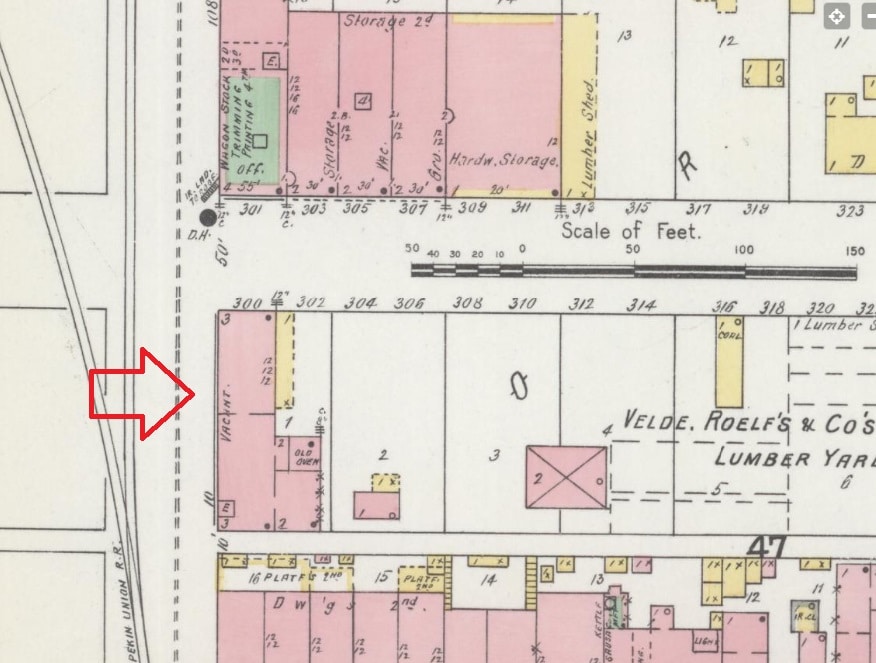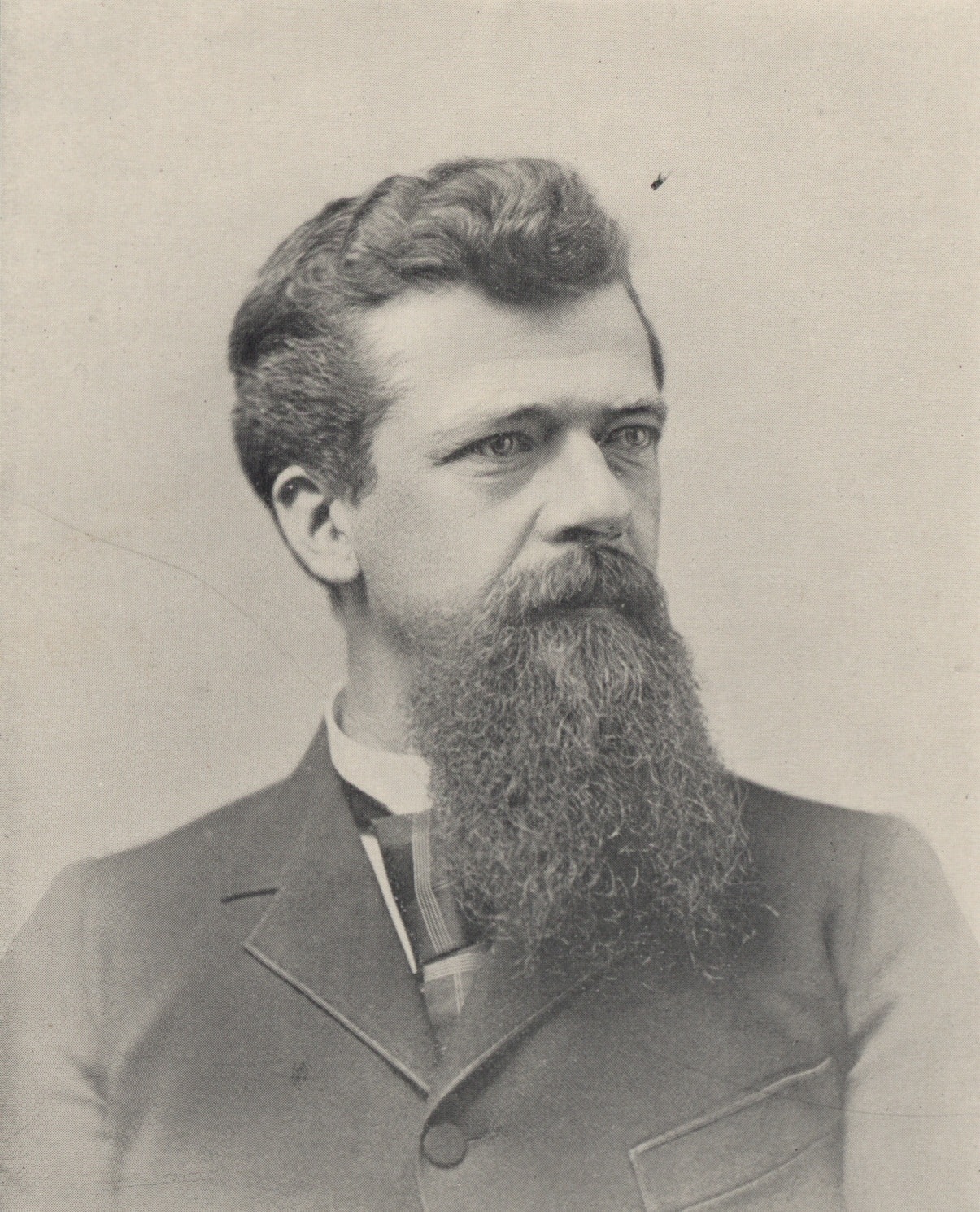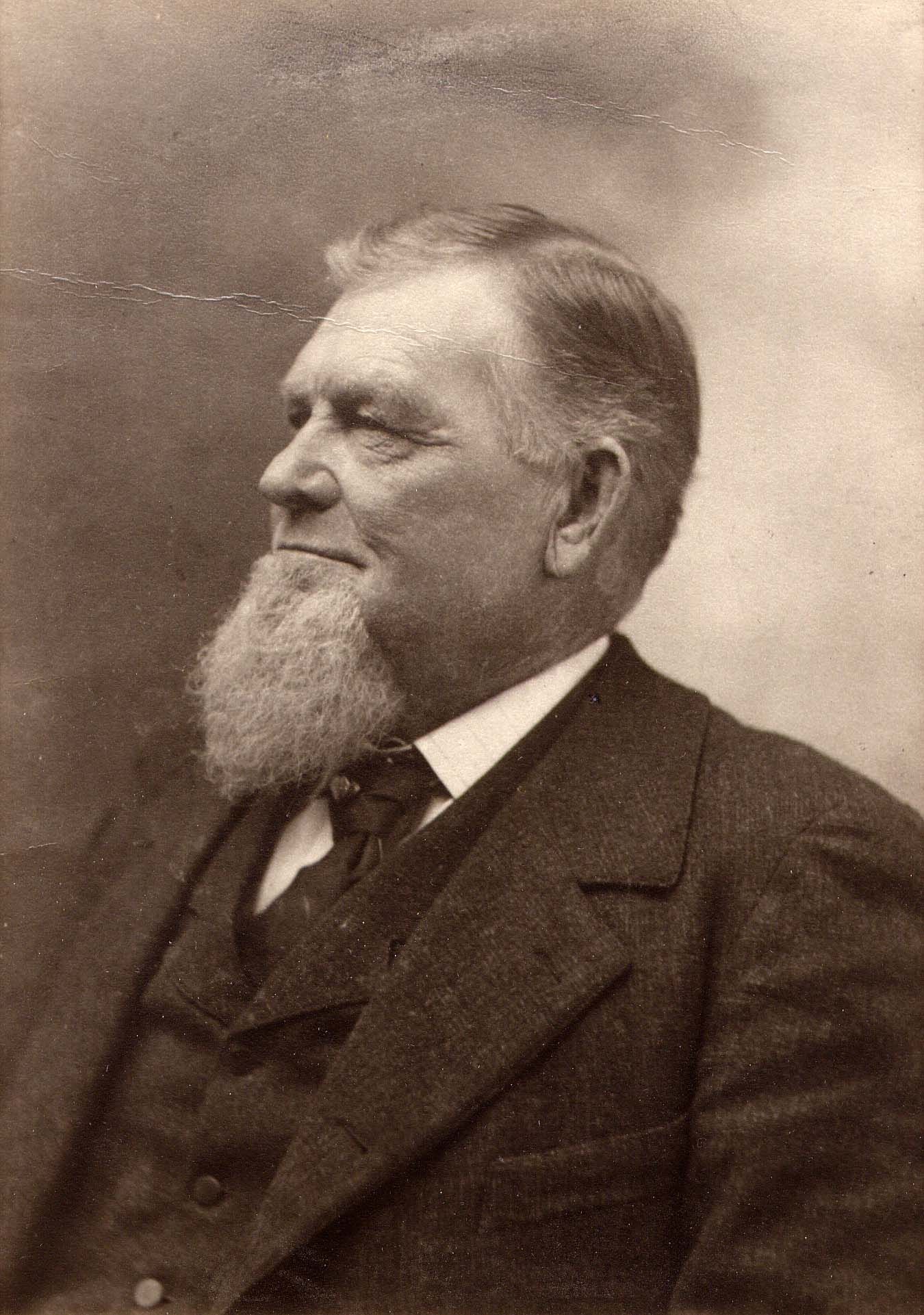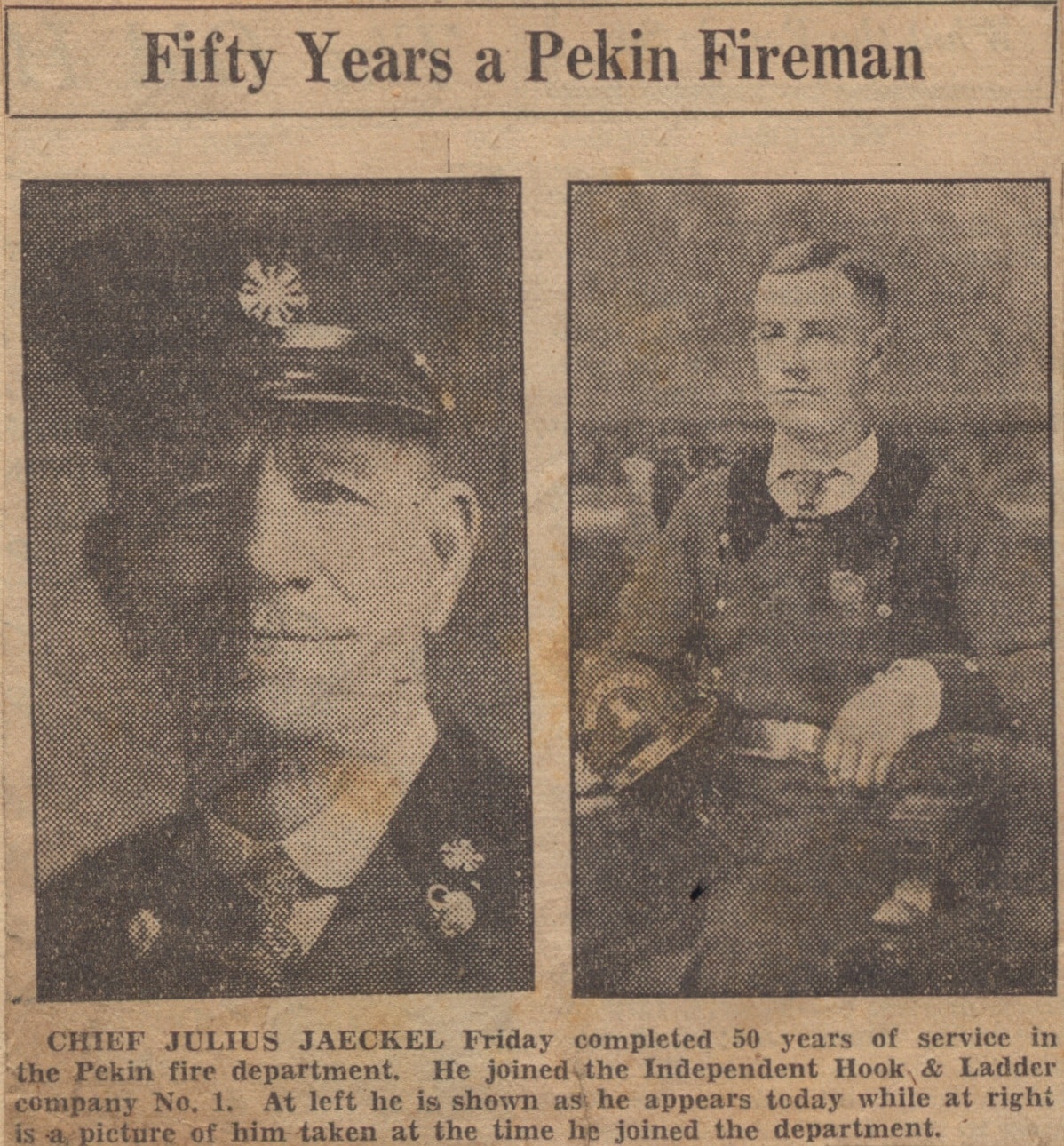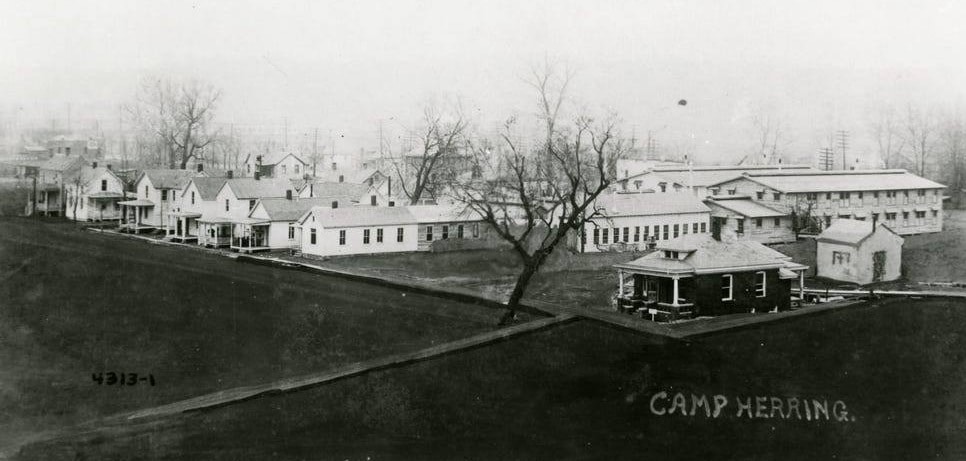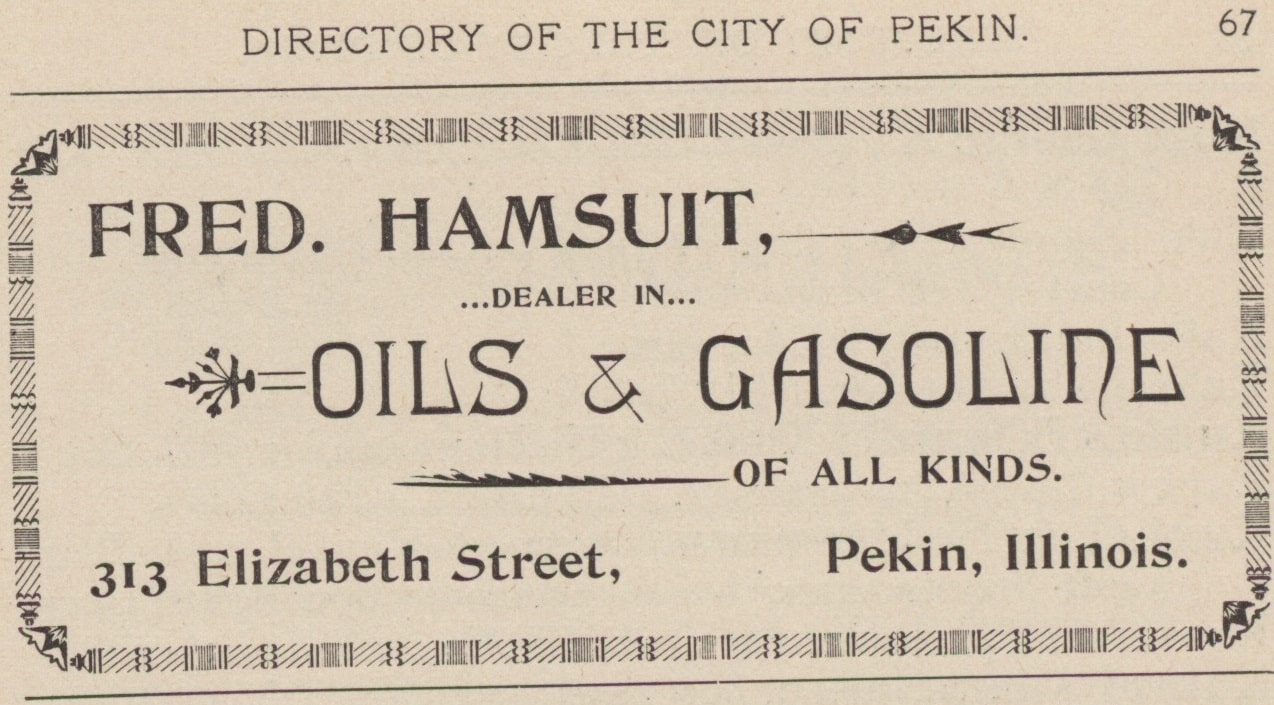The landscape of Pekin, Illinois, is filled with the enduring historical evidence of the surging wave of German immigrants that washed over the United States in the mid- to late 1800s. Pekin’s German immigrants built the city’s downtown businesses and banks, and ran factories and foundries. Many of the homes of the city’s leading German businessmen still remain, and streets are still named in their honor.
At times, however, fortune did not always favor the business ventures of Pekin’s German newcomers. That is true of one of the leading businessmen of late 19th century Pekin, George Lucas Jr. (1824-1894) — not to be confused with his younger contemporary George Herman Lucas Sr. (1848-1932), another of Pekin’s German businessmen (and no relation to the creator of Star Wars). George Lucas Jr. was born in Hesse-Darmstadt and first came to America in 1848, living and working until 1851, when he returned to Germany. Two years later George returned to the U.S., living successively in Ohio and Missouri. After losing his business during the hardships of the Civil War, George farmed in Missouri until the end of the 1860s.
While living in Missouri in the latter 1850s, George married a fellow German immigrant named Pauline Umrath (1842-1910), with whom he had four sons, Ernest August Jacob Lucas (1860-1928), Carl Lucas (1863-1928), Oscar Lucas (1868-1950), and Robert (1872-1892).
In 1870, George came to Pekin, where he opened the Lucas Bros. grocery story at 322 Court St. (an address on the south side of Court that originally was numbered “326”) with his brother August F. Lucas. After August’s death in the summer of 1886, George continued to run the grocery store, even adding a second location on the north side of Court. George first appears in Pekin city directories in 1876, which lists the Lucas Bros. firm selling groceries, wines, and liquors, at 326 Court, and showing George’s residence as 610 Broadway. About a decade later, the 1887 city directory lists George Lucas, grocer, 322 Court, residing at 606 Broadway (the same house previously numbered “610”).
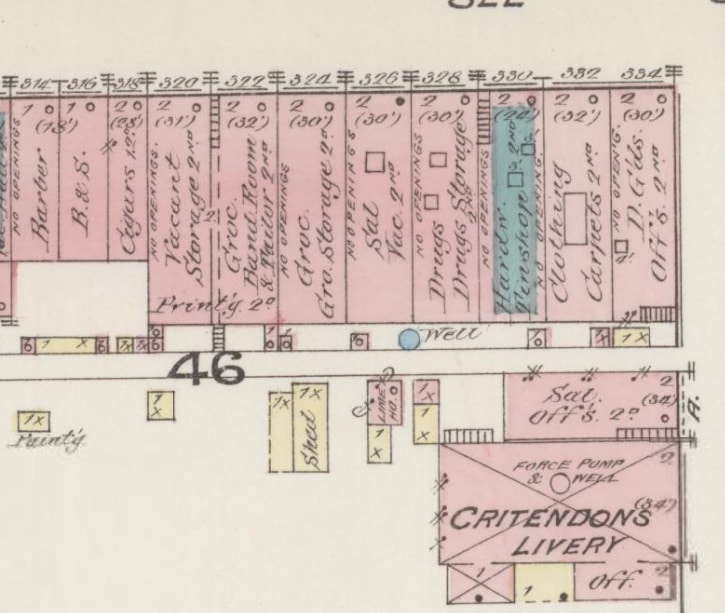


George Lucas Jr. reached the pinnacle of his success in the early 1890s. In January of 1891, George sold both his grocery story locations, and together with John W. Stoltz, L. J. Albertsen, C. C. Iffland, and J. W. McKay, he co-founded the Independent Biscuit and Cracker Company in a three-story building at 300 Margaret St., where 600 boxes of crackers were manufactured every day. In those same years, George also served on the board of directors of the German-American National Bank. The 1893 Pekin city directory lists him as “Lucas, George sec and treas I B & C C, h 515 Broadway.” This directory entry indicates that George had moved two houses east to a large domicile on the south side of Broadway, located at what is now the west parking lot of the Pekin Post Office.
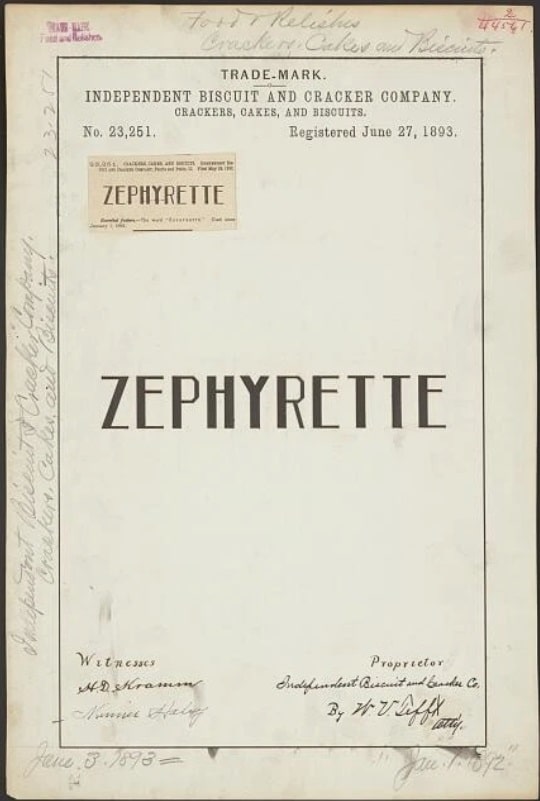
Acknowledged as one of the community’s pillars, George had his biography published in the “Portrait and Biographical Record of Tazewell and Mason Counties” (1894), pages 427-428, which reads as follows:
“GEORGE LUCAS. In giving an account of the different business enterprises of Pekin, we desire particularly to call attention to Mr. Lucas, who is Vice-President and Treasurer of the Independent Biscuit and Cracker Company, and is likewise Treasurer of the Water Works Company. Since locating here in 1870 he has conducted his various affairs very satisfactorily on his own responsibility and by fair dealing has obtained a good share of public favor.
“Our subject was born in Hesse-Darmstadt, Germany, January 13, 1824, and is the son of George Lucas, Sr., who was likewise a native of the Fatherland and one of the clerks in the Mayor’s office in Gimbsheim. Later the father came to America, and in 1868 located on a farm near Pekin, where his decease occurred in 1869, when seventy-two years of age. He was a Protestant in religion, as was also his wife, Mrs. Helena (Metzger) Lucas.
“Jacob Lucas, one of the four brothers, of whom three are living, remained in his native land attending school until after the Revolution of 1848, in which conflict he took part, and after the establishment of peace came to America. George Lucas left Rotterdam in 1848 on the sailing-vessel “Cornelius Grinnell,” and twenty-four days later landed in New York City and soon afterward went to Rochester and found work on a farm near that city. After two and one-half years spent in the New World, our subject returned to Germany, which trip consumed only nine days, and in his native land followed farm work two years.
“In 1853 our subject came to America, this time coming west as far as Cleveland, Ohio, where he spent one summer. It was his intention to join his brothers in St. Louis, Mo., but as the cholera was raging in that city he remained in the Buckeye State until the fall, when he went to Mound City, where he was employed in a wholesale house for one year. Thence he went to Hermann, Mo., where he was engaged as clerk in a country store. A year later he started in business for himself and was very successful in his undertaking until the outbreak of the late war, when the hard times caused him to lose all his property. In addition to this enterprise he also owned a valuable farm of two hundred and seventy acres, which he operated with great profit after the close of the war.
“In 1870 Mr. Lucas sold out his interests in Missouri, and coming to Pekin opened a grocery store which had formerly been owned by his younger brother, then deceased. He carried on a profitable business in company with another brother, whose decease occurred in August, 1886, and Mr. Lucas then ran the establishment alone for some time. It was one of the best grocery houses in the city, was 28×80 feet in dimensions and was stocked with a great variety of staple and fancy groceries. In the meantime he had purchased another store on North Court Street, which he carried on for five years, and in January, 1891, disposed of both of his groceries.
“Mr. Lucas was one of the organizers of the Independent Biscuit and Cracker Company, of which he was Secretary and Treasurer the first year. The company have a paid-up capital of $25,000 and occupy a large three-story and basement building, which is located on Third and Margaret Streets. They find a ready market for the product of their factory and manufacture six hundred boxes of crackers a day, besides numerous varieties of biscuits.
“Mr. Lucas has a fine home located on Broadway, in which comfort reigns supreme. He is one of the Directors of the German National Bank. His life has been crowned with success because he has earned it, and he now enjoys the respect and esteem of all with whom he has become acquainted.”

Along with George’s successes came sorrows. In 1892, he and his wife Pauline suffered the loss of their son Robert at the age of 19.
And then just two years later, on 1 Aug. 1894, the same year George’s life was celebrated in the “Portrait and Biographical Record,” George himself passed away at the age of 70. In his will, he apportioned his estate among his sons Ernest, Carl, and Oscar, and his wife Pauline.
His business venture, the Independent Biscuit & Cracker Company, did not long survive him. It appeared for the first and only time in the 1893 Pekin city directory. So ephemeral was the business’ life that it is not yet indicated on the 1892 Sanborn Fire Insurance Map of Pekin, and then in the 1898 Sanborn map the I. B. & C. C.’s old building is marked “vacant,” with an “old oven” shown on the map as the only hint of what had been there just four years before.
Likewise, both of George’s homes on Broadway long ago succumbed to the wrecking ball. The only visible memorial to George Lucas Jr.’s life remaining in Pekin is his gravestone in Lakeside Cemetery, where his earthly remains rest with those of his wife and sons.
